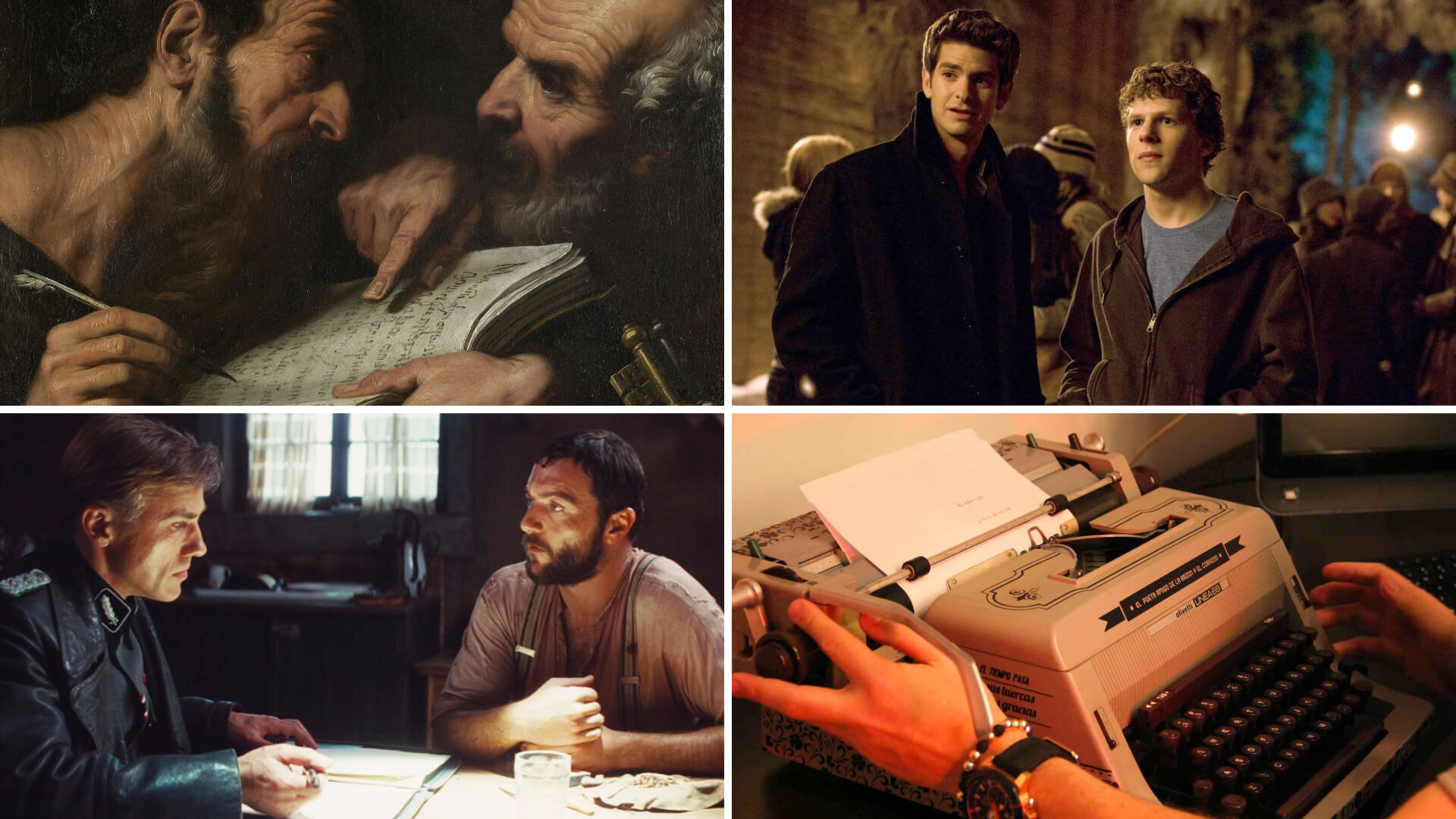Movies are a visual medium first and foremost, which means making on-screen imagery as effective as possible. And if you’re making a narrative feature, you will more than likely be needing dialogue. Movies didn’t start with traditional dialogue tracks, but these days, virtually every movie in existence has it. But what is dialogue, why does it matter, what makes good vs. bad dialogue, and how can you make the most of it?
What Does Dialogue Mean?
The definition of dialogue
Dialogue as written text was developed a very long time ago, becoming a genre by the time Plato had made it his own. These days, it refers to many other things, including conversations among people. But we’re going to keep our focus on cinema when we provide a dialogue definition.
DIALOGUE DEFINITION
What is dialogue?
Dialogue is a written or spoken exchange of words between one or more characters. Most narrative stories feature this verbal communication, which is often easily identifiable by either quotations in literature or dedicated spaces in scripts. Dialogue has various uses, though it is most often for the purposes of advancing the plot and building character. For example, it lets the audience learn more about a character, their history, feelings, and viewpoints.
Dialogue Characteristics:
- Used for advancing the plot
- Captures the "voice" of a character
- An opportunity for subtext and verbal irony
Written Dialogue
Dialogue in screenplays
Good dialogue tends to make or break a script, as the majority of what your reader will be doing is reading it. And of course, good dialogue on paper has to translate on-screen as well.
You can get an idea of this from YouTuber Now You See It’s video below where he quickly but succinctly covers dialogue examples in film.
What does dialogue mean?
So, what is dialogue in a screenplay? Using Taika Waititi’s JoJo Rabbit screenplay as an example, and implementing it into StudioBinder’s screenplay software, we can see dialogue examples and how they are used.
The excerpt below shows off the introduction of a setting, which is extremely common and notable in any script.
Setting Introduction in Dialogue Example • Read Full Scene Here
Related Posts
This is a very common and standardized way to present dialogue in your screenplay. As you see, the dialogue is laid out very clearly, so much so that each block has plenty of space. You will also notice that character names are capitalized, which leaves no doubt as to who is speaking and when.
You should also understand what the dialogue is meant to do. Are we advancing the plot in some way? Are we learning more about a character? Or are the characters speaking just for the sake of speaking? As a result, you can make types of dialogue very subtle, very obvious, or something in-between.
The Scott Pilgrim vs. the World script is chock-full of great dialogue examples, some of which are made to make clear what is going on in the story. The example below comically lays out what our main plot is all about.
Main Plot Through Dialogue Example • Read Full Scene Here
Even though this scene is pretty obvious in its intentions, the use of a beat also drives home the fact that Scott is more interested in Ramona making their relationship official than the reality of having to fight her evil exes. This is the power dialogue often can have, one which can creep up on the audience in unexpected ways.
For something more subtle and grounded, look at the excerpt below. Courtesy of Wes Anderson & Owen Wilson’s The Royal Tenenbaums, the scene is a quick set-up with a brief exchange.
Expressing Character Through Dialogue Example • Read Ful Scene Here
It may not seem like much, but these two lines say a whole lot about Royal, his character, and how he views himself. Dialogue can be very expressive and informative if you have a character talk a lot, but minimal dialogue can be just as effective.
When writing a screenplay, you will have to decide what types of dialogue you want. Avoiding too much talking is important, but maybe it’s a character quirk. Not enough speaking can be frustrating in some movies, while it can be part of the appeal in another. What’s important is that your dialogue choices make sense for the story you want to tell.
Related Posts
Scene Studies
Notable Dialogue Examples in Film
At the end of the day, no matter who reads your script, most people will watch the movie. At this point, dialogue is supported by performances, editing, and direction.
If anyone (else) is famous for how they can pull off dialogue, it’s writer-director Quentin Tarantino. As is part of Tarantino’s directing style, he loads his movies with characters talking, to the point of excess, depending who you ask.
But even though his movies are also known for being extremely violent, it’s the dialogue that is often singled out and praised by viewers, critics, and fans.
Take a look at our video below to get an idea of how effective Tarantino’s dialogue is. Using suspense and misdirection, as well as top notch character writing, he creates a unique and unforgettable confrontation.
Effective conversation goes a long way • Subscribe on YouTube
The right kind of dialogue can go a long way in helping a movie get critical acclaim. Almost anything you watch will have dialogue, and you can easily see how effective it is, what purpose it serves, and how you too can implement techniques into your own projects.
Related Posts
UP NEXT
Screenwriting Tips for Dialogue
Now that you have a basic definition of dialogue down, it’s time to learn how you can best approach writing it yourself. Our guide goes over many tips for writing better dialogue, along with many examples from film scripts and clips.



